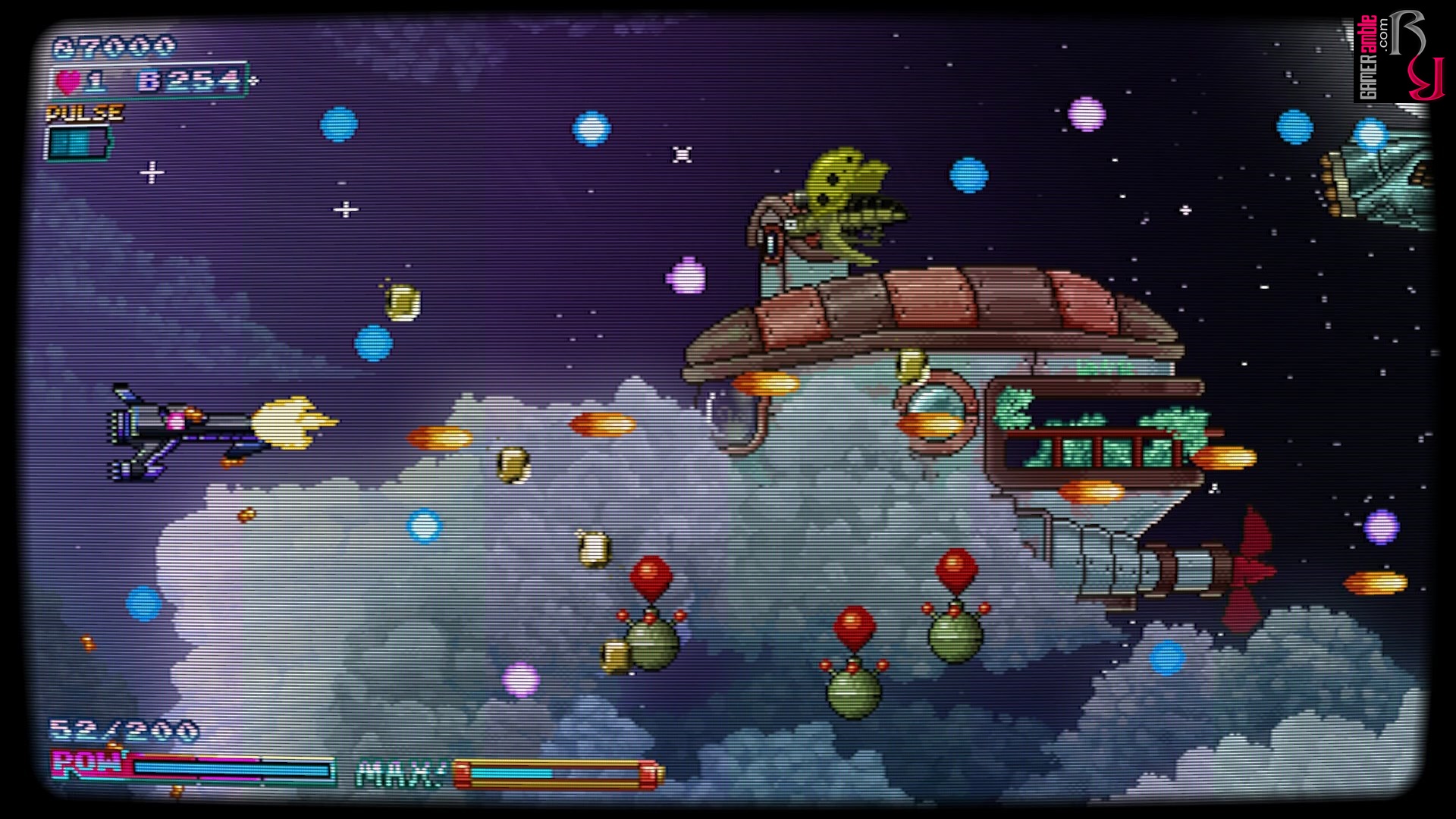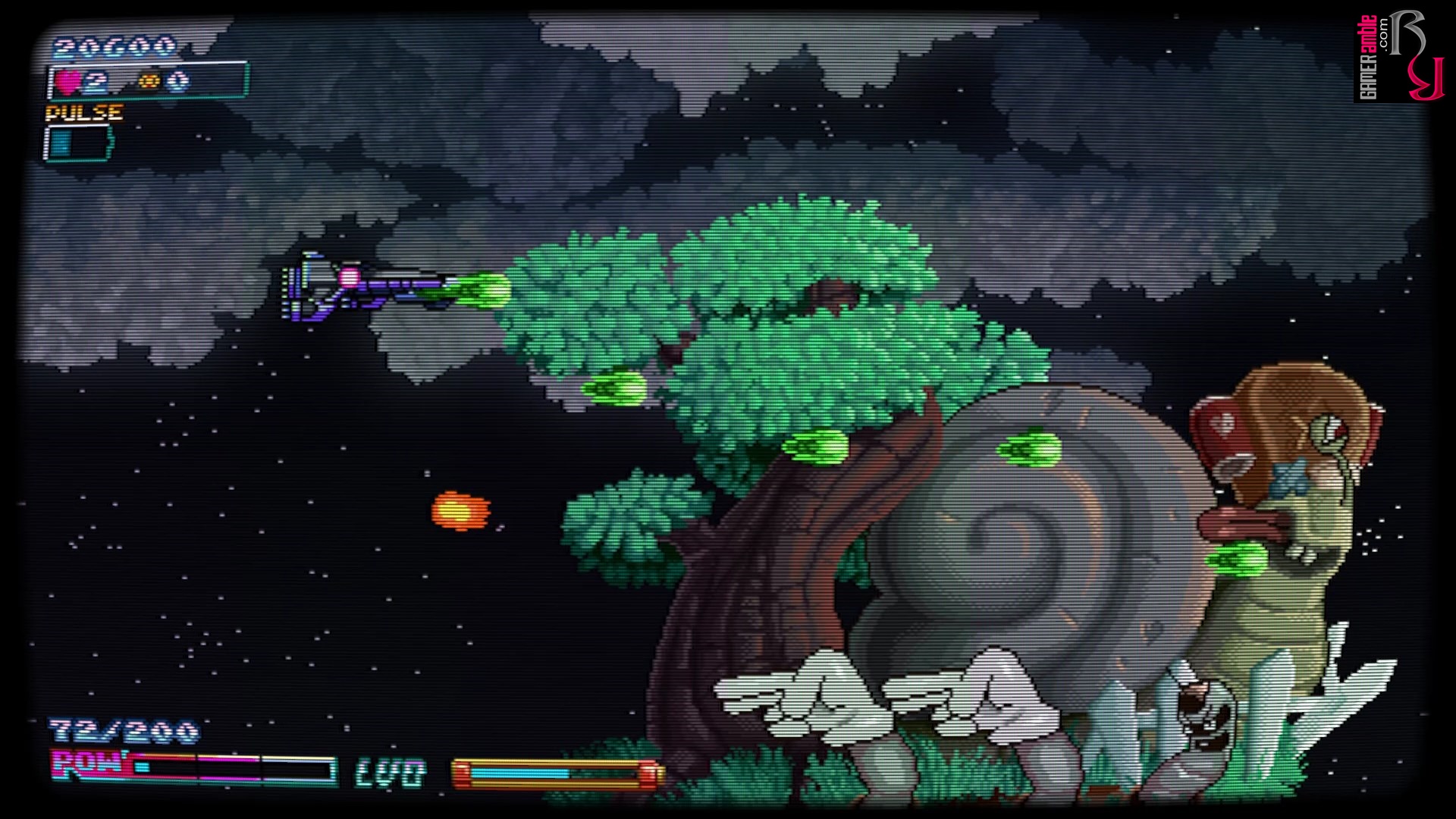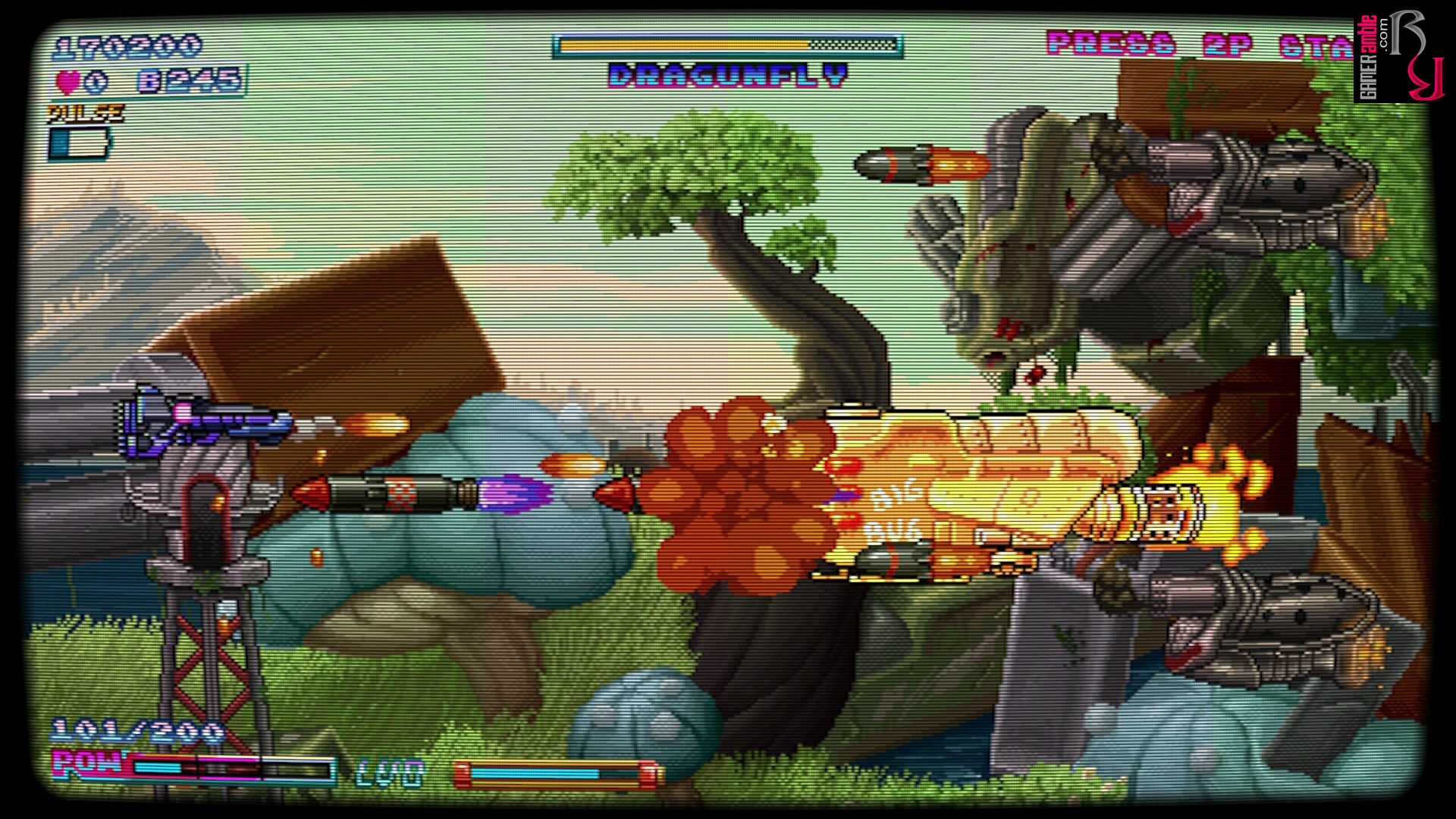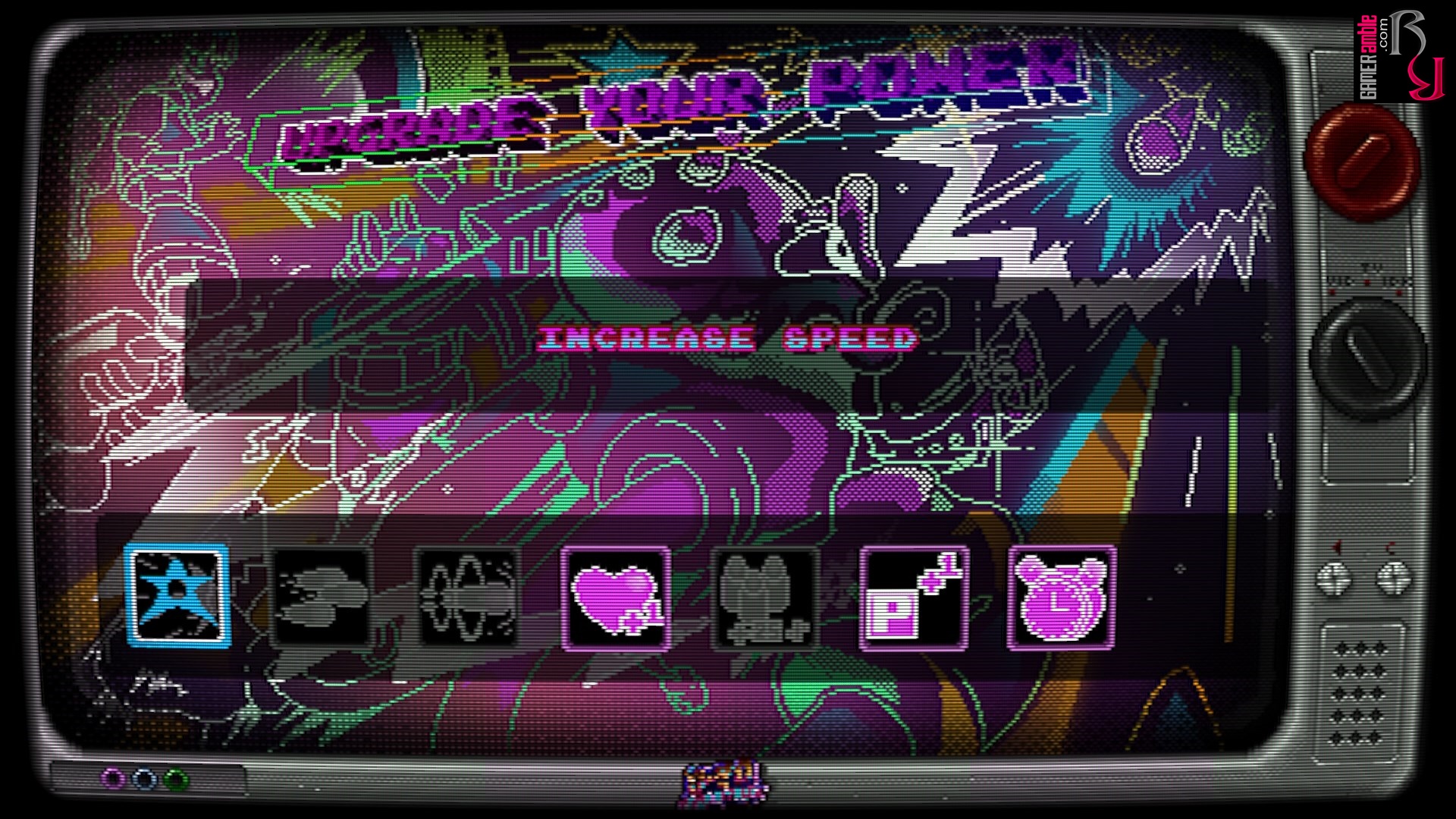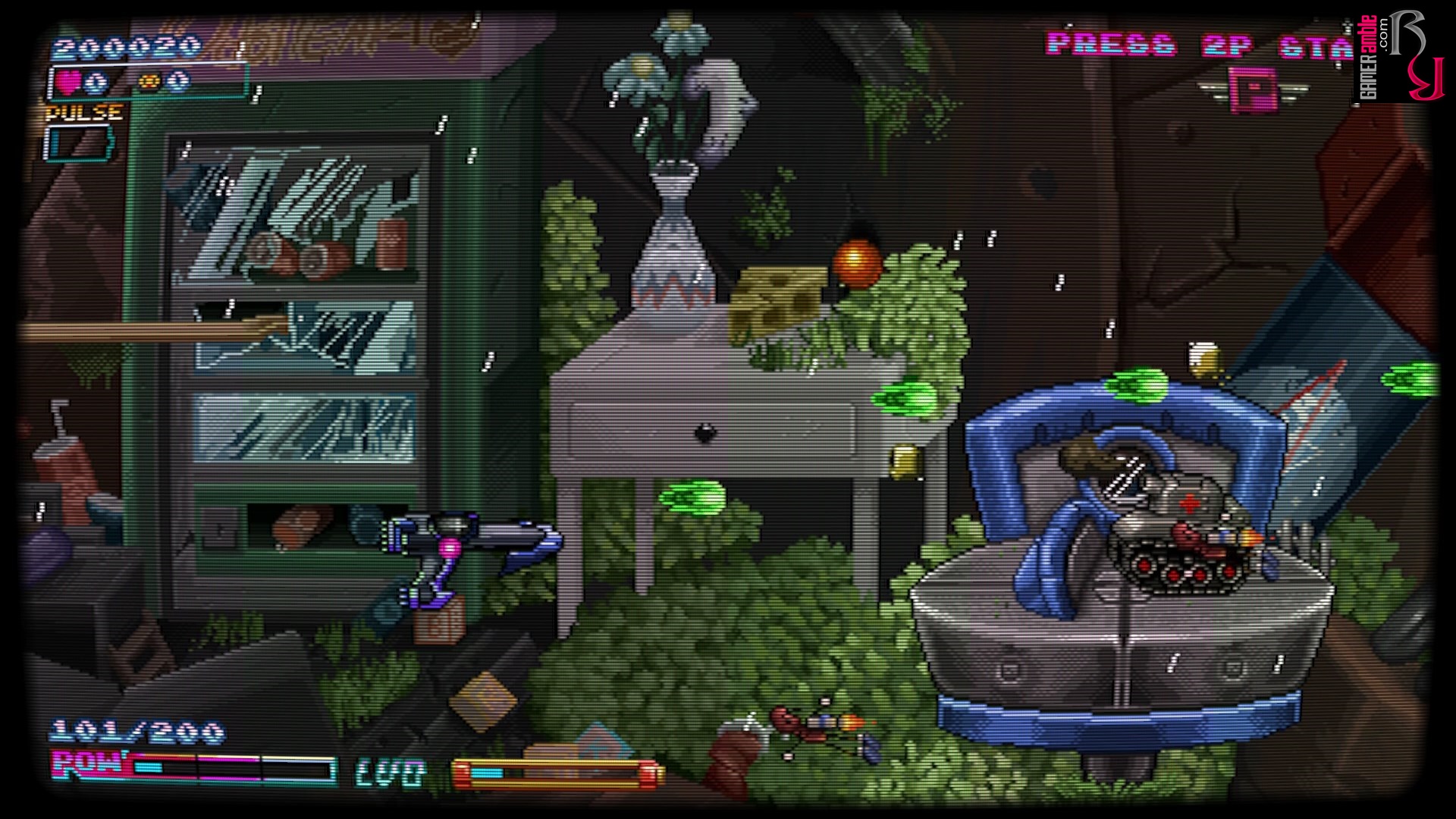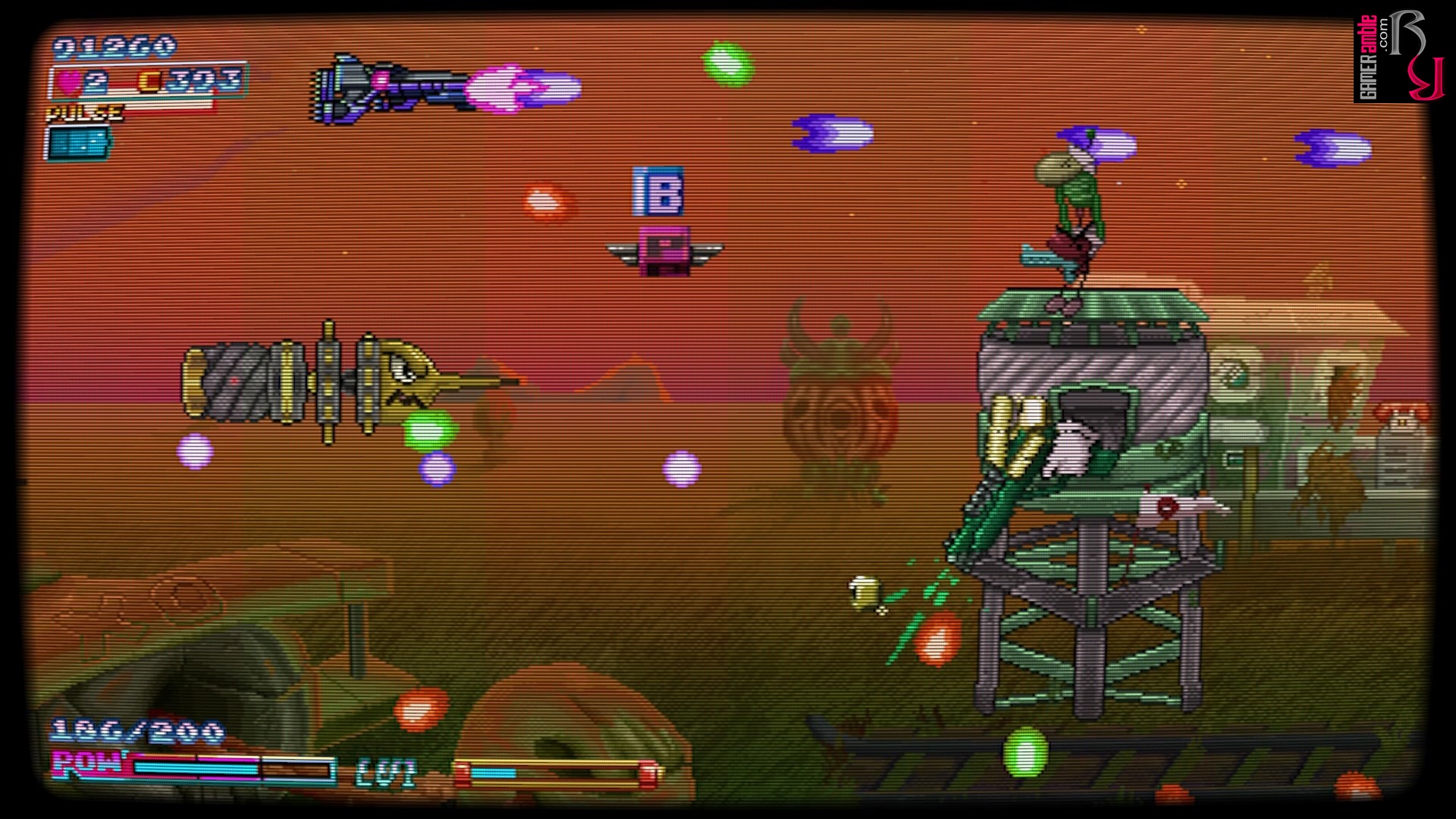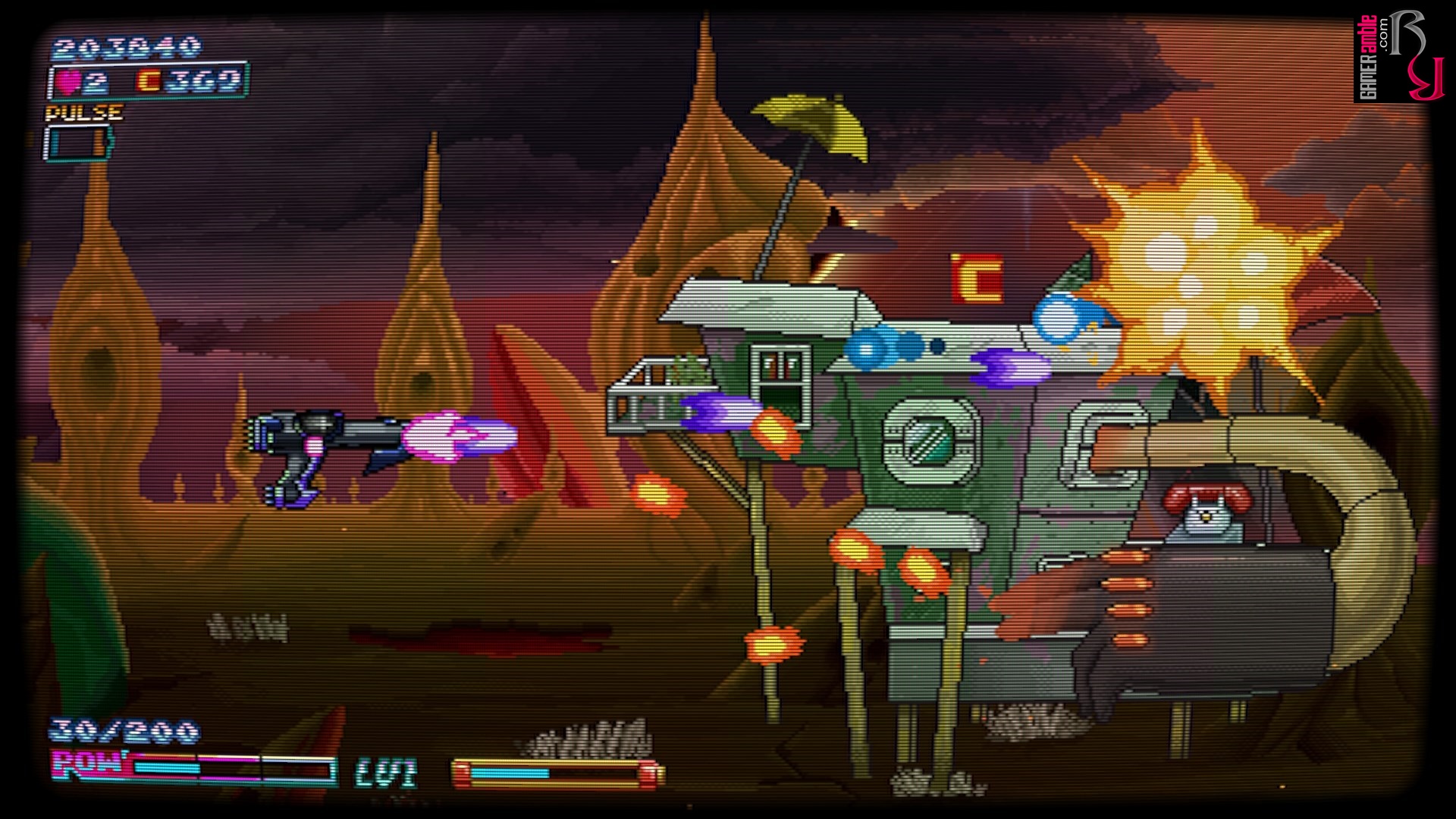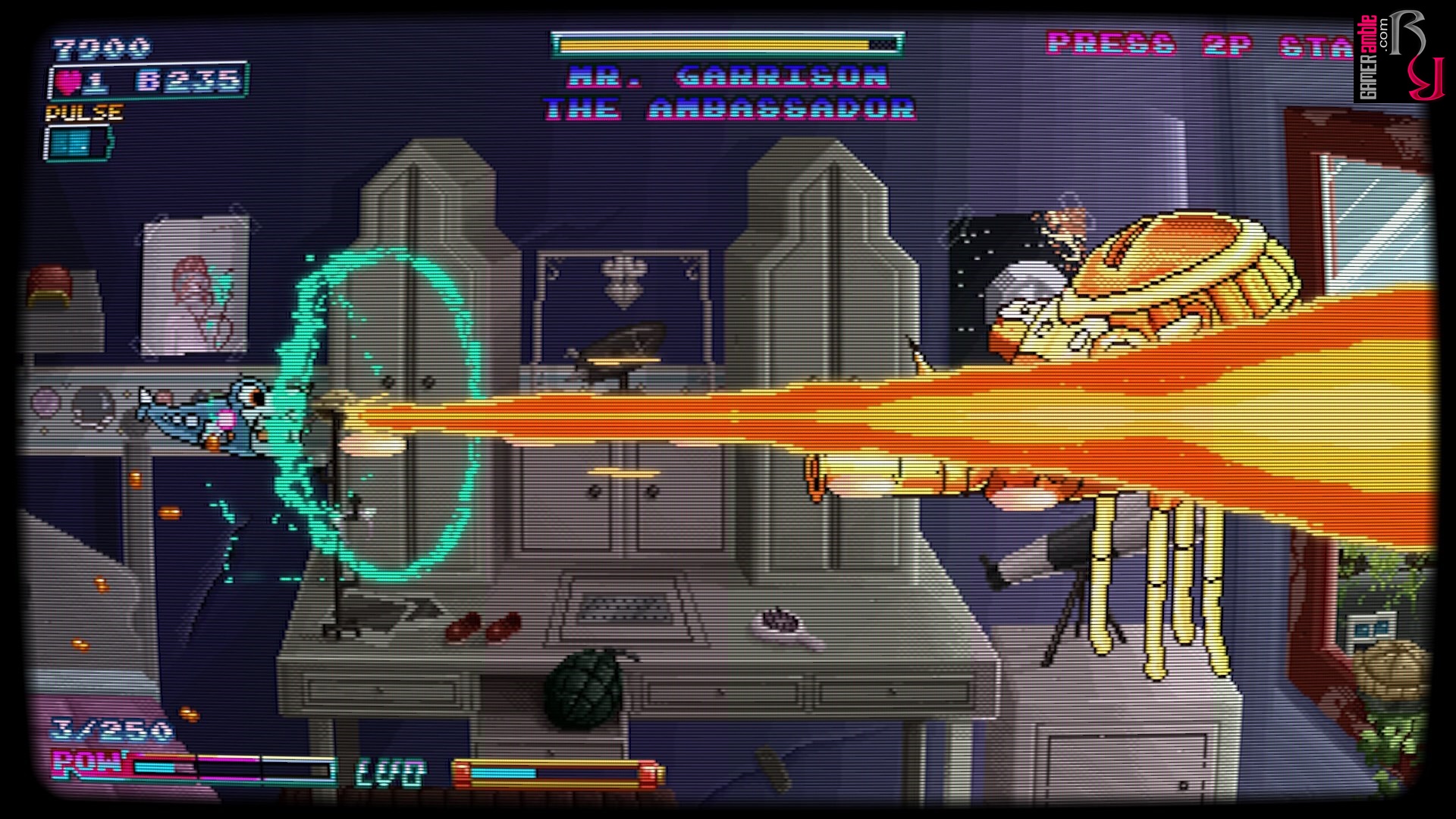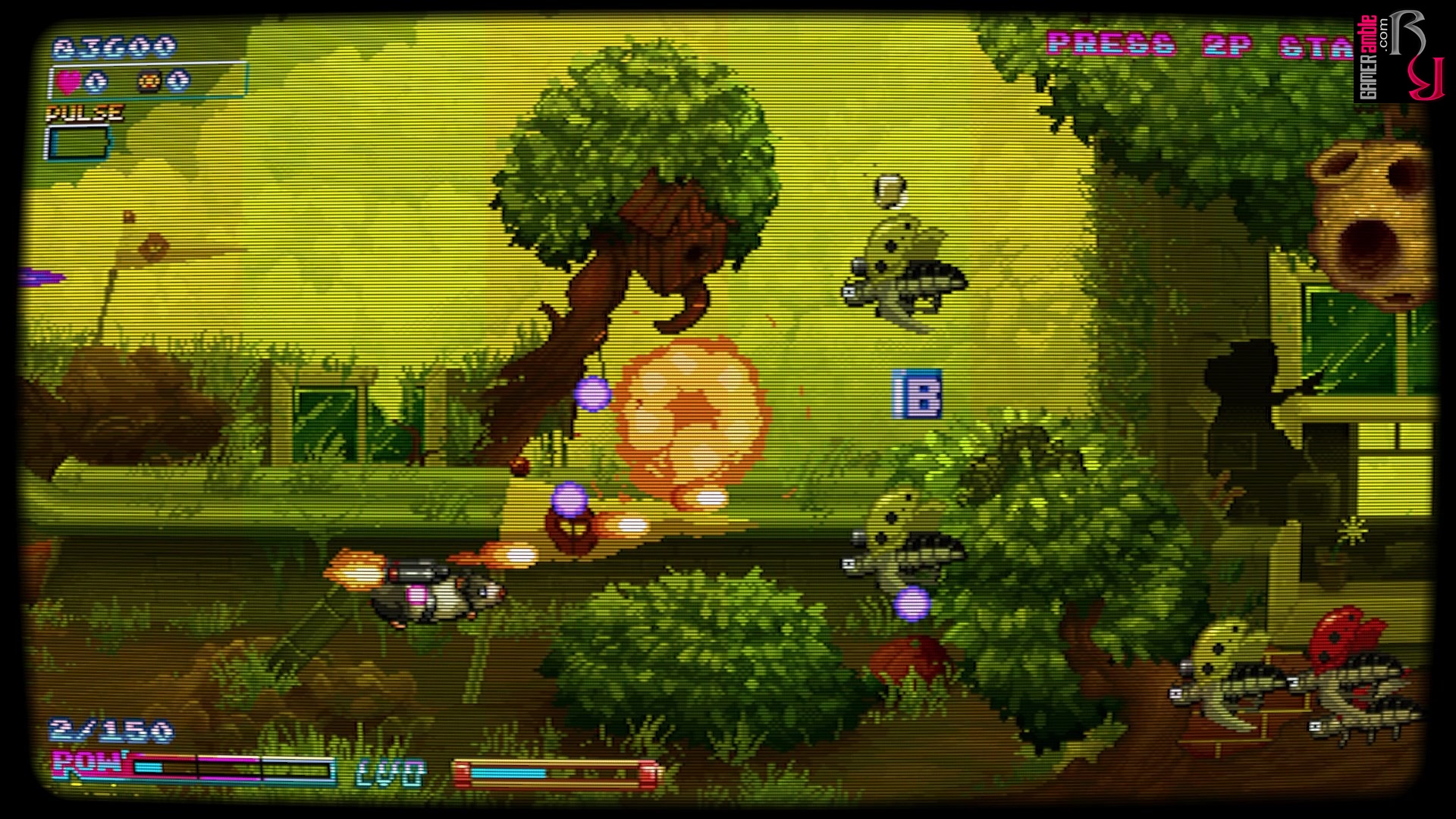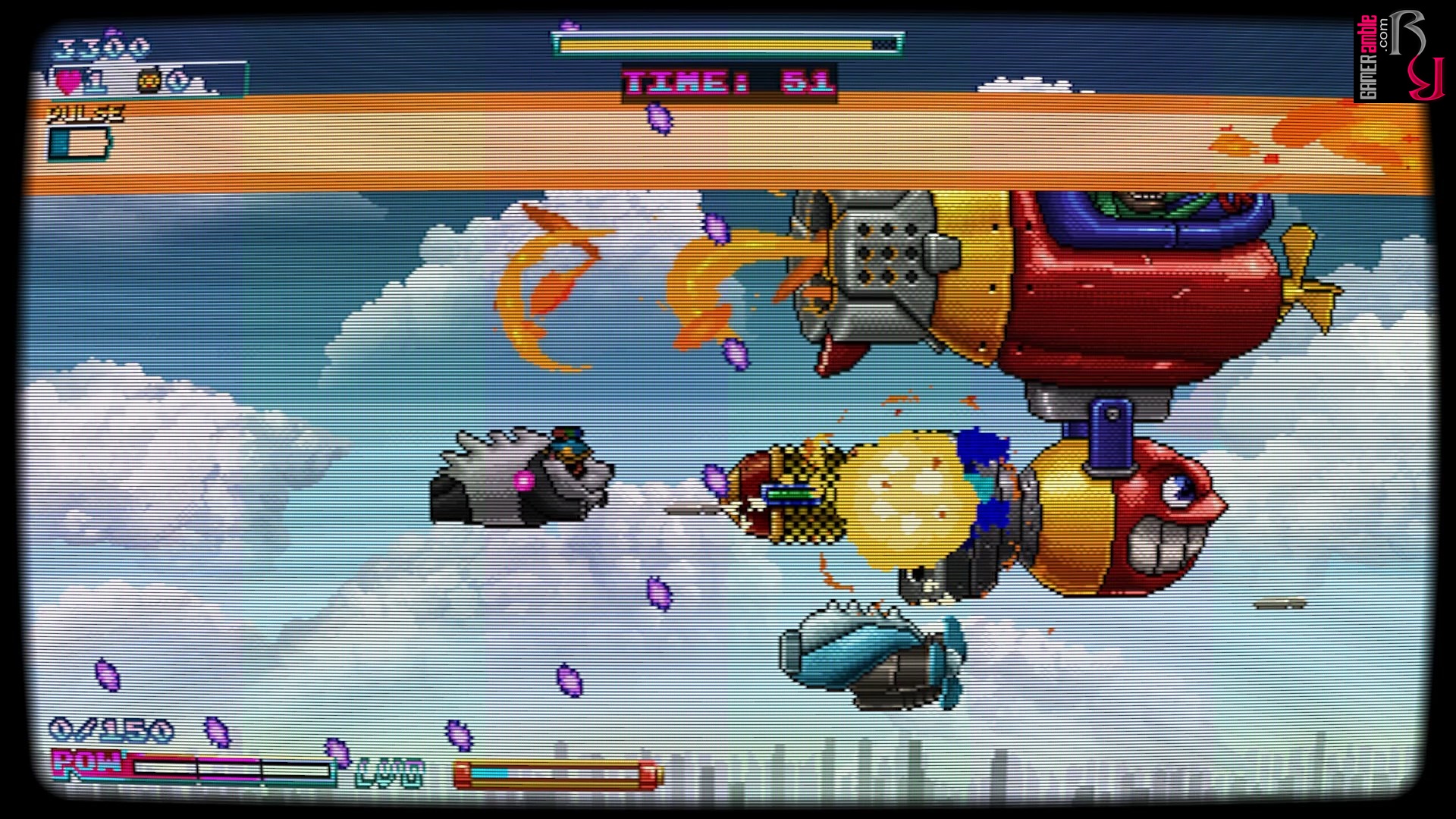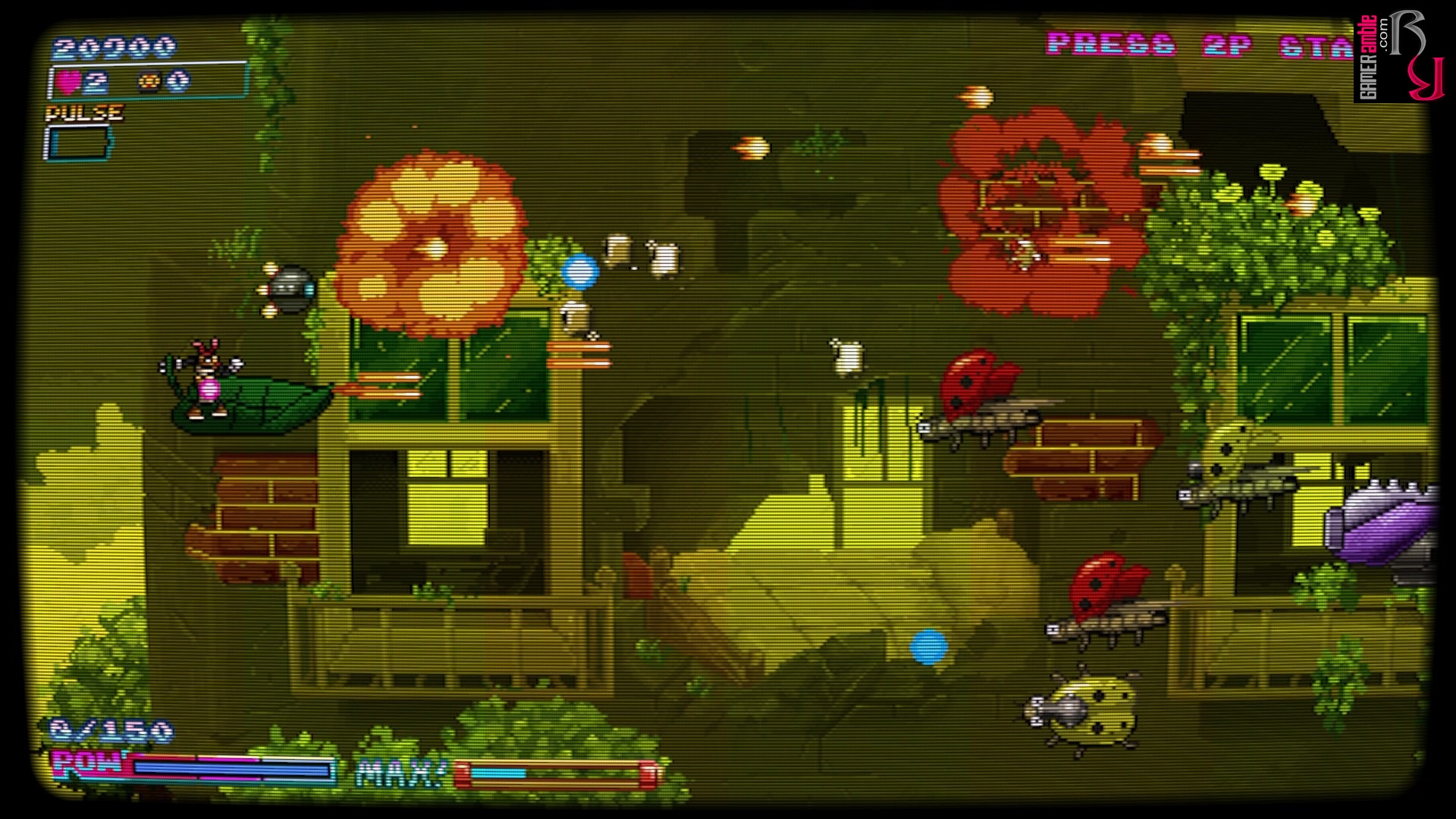Q-YO Blaster
Developer: TEAM Black Hat Robot | Publisher: TEAM Black Hat Robot | Release Date: 2018 | Genre: Action / Bullet Hell Shooter / Indie | Website: N/A | Purchase: Steam
Shooters, much like beat ‘em ups, often feel the need to include the most ridiculous over-the-top stories to justify what is happening in the game. Q-YO Blaster takes the classic “alien invasion” trope and transforms it into what feels like a fever dream. Everything is explained in the intro cut-scene and between levels, but unfortunately, the quality of the translation is rather questionable. From what we could figure out a giant asteroid is heading for Earth while carrying some nasty invaders. A group of miniature extraterrestrials decide to help Earth and contact a scientist called Mr. Cheeks to prepare a defensive force. Mr. Cheeks just so happens to be a guinea pig, and his idea of defenses includes a decapitated dog head, an iron cat, some type of tomato person, a robot, and much more.
What follows is a horizontal-scrolling shooter that takes players through ten levels of action. Players can choose the story mode, which chronicles the battle of Mr. Cheeks and the Earth defenders against the alien insects, or Mission Mode, which challenges players to accomplish specific tasks in a certain time. The game also has an unlockable Arcade mode, which bumps up the difficulty to new heights. Story Mode also allows players to choose their difficulty, which influences factors such as the number of lives and continues they have at their disposal. Next up players get to choose their “Team” which influences which character they can pick. Team Blood Pressure is all about dealing damage while Team Microwave favors endurance. Then there’s Team Boom, which is a mix of the two. Once a team is selected players can then pick their character, which includes the aforementioned flying dog head, iron cat, robot, as well as guinea pig with a rocket strapped to its back, various anime girls, and more. The choices don’t end here either as players can also pick a “special.” Initially, players only have access to a Super Laser or Shield, but additional ones, such as Devil Rockets Laser Sharks, and Acid Guitars can be unlocked.
Once in control of their character, most shooter fans will feel right at home with Q-YO Blaster despite all the weirdness. The levels scroll from left to right and players can only fire in one direction, so it is all about blasting everything in sight while avoiding enemy bullets. While not quite as intense as bullet hell shooters the game does chuck a fair amount of projectiles at players and it only takes one hit to lose a life. Fortunately, the game is quite lenient too, and after dying players respawn on the spot instead of being thrown back to a checkpoint or the start of the level. The same goes for running out of lives and continuing, so most players should have no trouble completing the game on the easiest difficulty setting at the very least. In true bullet hell fashion the character sprites are quite big, but the actual hitbox is a small glowing circle in the middle of them, so dodging bullets is not that hard.
With its 2D visuals and massive sprites Q-YO Blaster feels like a homage to classic shooters such as Parodius. With the CRT filter enabled the game looks like it came straight out of an arcade and even with tons of bullets heading our way we never experienced any slowdown. It should be mentioned that while the game initially ran at 30 fps, the developers have since released an update that allows it to run at a buttery smooth 60fps. Instead of bland levels set in space, Q-YO Blaster takes players through pleasant meadows, lush gardens, and, thanks to the whole miniature aspect of the game, even inside houses. Enemies are mostly insect-themed and some of the bosses are unique, to say the least.
Q-YO Blaster features a decent soundtrack with a mixture of upbeat and foreboding tunes playing in the background. The sound effects are good too, but can drown out the music as players pretty much have to hold down the fire button nonstop. Thankfully, the volume levels can be adjusted independently to get the right balance. We found the controls to be responsive although as always playing with a controller is highly recommended. In addition to basic shots, which are unlimited, players can also pick up power-ups that grant them a limited amount of special bullets such as lasers or rockets. Destroyed enemies leave behind gems, which can be collected to fill up the special power meter. Activating this power unleashes whatever special power players choose at the start of the game, such as the shield or super laser. In addition, the game features a “pulse” button that when activated turns enemy projectiles into gems. This is especially great during boss battles when the screen can be covered in bullets but requires a power-up to recharge. Between levels, players can pick a permanent power-up from a list that includes increased speed, faster bullets, extra ammunition, extended time duration for items on the screen, and more powerful basic bullets.
As with most titles in the genre, Q-YO Blaster is a relatively short game and the levels are fairly tiny too. It’s possible to complete most of the modes in about two hours, but getting the achievements for finishing a game without continuing or completing the game from beginning to end on expert difficulty will take a lot more practice. The game does have some annoyances, such as shots feeling very underpowered on the higher difficulty levels and the fact that some of the characters feel way too slow. The rough translation might annoy some players, but veterans of the genre will remember a time when this was not uncommon for shooters. Overall, Q-YO Blaster is somewhat of a niche title due to how quirky and over-the-top it is. It’s not a game aimed at players who will complete it once and then never again, but those willing to try out all the characters, modes, and special attacks should find plenty to keep them busy.
System Requirements
- OS: Windows 7
- Processor: Dual Core 1.8 Ghz
- Memory: 1 GB RAM
- Graphics: Onboard
- DirectX: Version 9.0
- Storage: 250 MB available space
- Sound Card: Onboard


